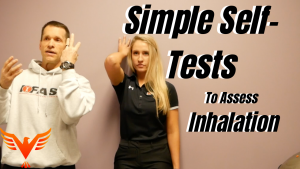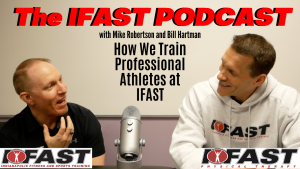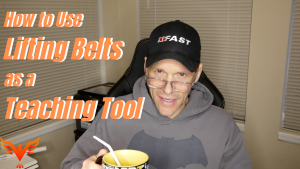We can use shoulder flexion and hip flexion as self-tests to assess your ability to breathe effectively. There are other simple tests like a toe touch or squat, but they may allow compensatory strategies to achieve the end result. I’m more in favor of the asymmetrical tests as you can test both extremes of inhalation […]
IFAST
The IFAST Podcast #5 – How We Train Professional Athletes
We’ve been lucky to have had some great professional athletes work with us at IFAST in Indianapolis. Here’s how we do it. :25 Mike’s beard check 1:15 Do we only train pros? 2:10 Can a business survive only training pros? 2:30 How much off-season do we get? 6:00 How we got our first pro 7:55 […]
Before you prescribe I,T,Y exercises, consider the consequences
In this discussion, we use the common I,T,Y exercises as a representation of how and when to individualize exercise prescription, and why you cannot generalize. :10 Blind exercise prescription 1:00 I,T,Y may be the wrong thing to do 1:45 Concentric vs. Eccentric and “weakness” 2:40 A false external rotation measurement 3:04 Dorsal-rostral compression 3:28 You […]
IFAST Shoe Quest 3: Adidas Alphabounce Trainer vs New Balance Minimus 20 V7
IFAST Shoe Quest: Round 3 Erik and I continue to look for shoes with broad application for linear speed, jumping and plyometrics, change of direction, and Olympic weightlifting. Competitiors: Adidas Alphabounce Trainer vs. New Balance Minimus 20 V7 What shoes do you want to see tested?
How to Use a Lifting Belt as a Teaching Tool
A weightlifting belt is most often worn to increase the amount of weight you can lift. However, there may be other uses as a teaching tool in some contexts. The intraabdominal pressure created by the lifting belt can provide cues to promote a concentrically-oriented pelvic diaphragm and create an overcoming contraction to enhance lower extremity […]




